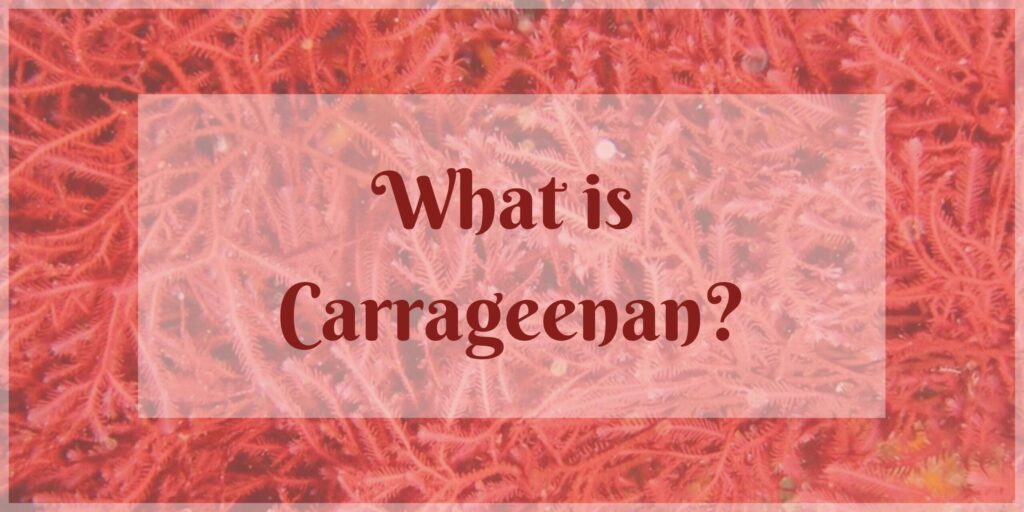Effects of carrageenan
The effects of carrageenan are addressed carefully in this article. Carrageenan is a substance made up of a mix of polysaccharides that is taken from the red and purple seaweeds. It is used in food to make things thicker or to make things mix together.
Since the 1950s, carrageenan has been appended to processed foods. Various types of carrageenan have varied uses and possible risks. Red seaweed is used to make food-grade carrageenan, which is then processed with alkaline substances.
When acid is added to carrageenan, a compound named degraded carrageenan or poligeenan is made. This substance comes with a lot of health warnings. Poligeenan, which is degraded carrageenan, is not safe for human consumption.
Poligeenan is a chemical that causes inflammation. Researchers often use it in the lab to test new medicines for pain and inflammation. Poligeenan is not allowed to be added to food.
It doesn’t have taste or nutritional value, but it is a good thickener and stabiliser. Some makers put it in things like chocolate milk to keep them from separating.
Side effects of carrageenan
Inflammation and bloating are included in the effects of carrageenan. When inflammation gets worse, other diseases like arthritis and inflammatory bowel disease are more likely to happen. More inflammation can cause tendonitis, inflammation of the gallbladder, or chronic cholecystitis.
When taken by mouth, carrageenan is often eaten with food. Poligeenan, a version that has been changed, may be dangerous. It could cause damage to the intestines, bleeding, and even cancer. But this risk hasn’t been shown to happen to people. Also, carrageenan products sold in the U.S. and Europe can’t have more than a small amount of this broken-down form.
Carrageenan sprayed into the nose for up to 7 days is probably safe for most people. Applied to the skin: There isn’t enough good evidence to know if carrageenan is safe or not. As a side effect, it might make you feel sore. Carrageenan could stop the blood from clotting and make it bleed more. Carrageenan may create conditions that cause bleeding to worse.
Adverse effects of carrageenan
Carrageenan may make it take longer for some people’s blood to clot. Carrageenan may make surgery more likely to cause bleeding and make it harder to control blood pressure. Stop using carrageenan at least two weeks before surgery.
Patients with ulcerative colitis who are in remission and don’t eat carrageenan may have a higher chance of getting sick again if they eat it. Irritable bowel syndrome and glucose intolerance are entailed in the effects of carrageenan.
Breastfeeding and pregnancy: Many foods have carrageenan in them. We don’t have adequate information to know if it is safe at the higher doses used as medicine. To be safe, stick to the recommended levels.
Some experts worry that adding carrageenan to food could be dangerous. This is because several studies, some of which go back to the 1960s, show that the chemical may break down in stomach acid and become poisonous. No one in the medical field knows how much carrageenan breaks down in the digestive tract. We can’t tell if any amount is dangerous because of this.
Bottom line
No one in the medical field knows how much carrageenan breaks down in the body. This means that we don’t know if any amount is dangerous. It’s important to note that no relevant studies have used people as subjects.
There isn’t enough information to know what a good dose of carrageenan might be as a medicine. Remember that natural products aren’t always safe and that amounts can be important. Make sure to do what it says on the product’s label and talk to a doctor or nurse before using it.
Colon cancer and food allergies are encompassed in the effects of carrageenan. If you’re concerned about carrageenan’s negative impacts, remove it from your diet and watch if your condition improves. It has to be listed under the list of ingredients by law, so it should be easy to figure out which foods to avoid.
If you still have inflammation or digestive problems after getting rid of carrageenan, you should see a doctor. This could mean that your concerns aren’t caused by carrageenan.



